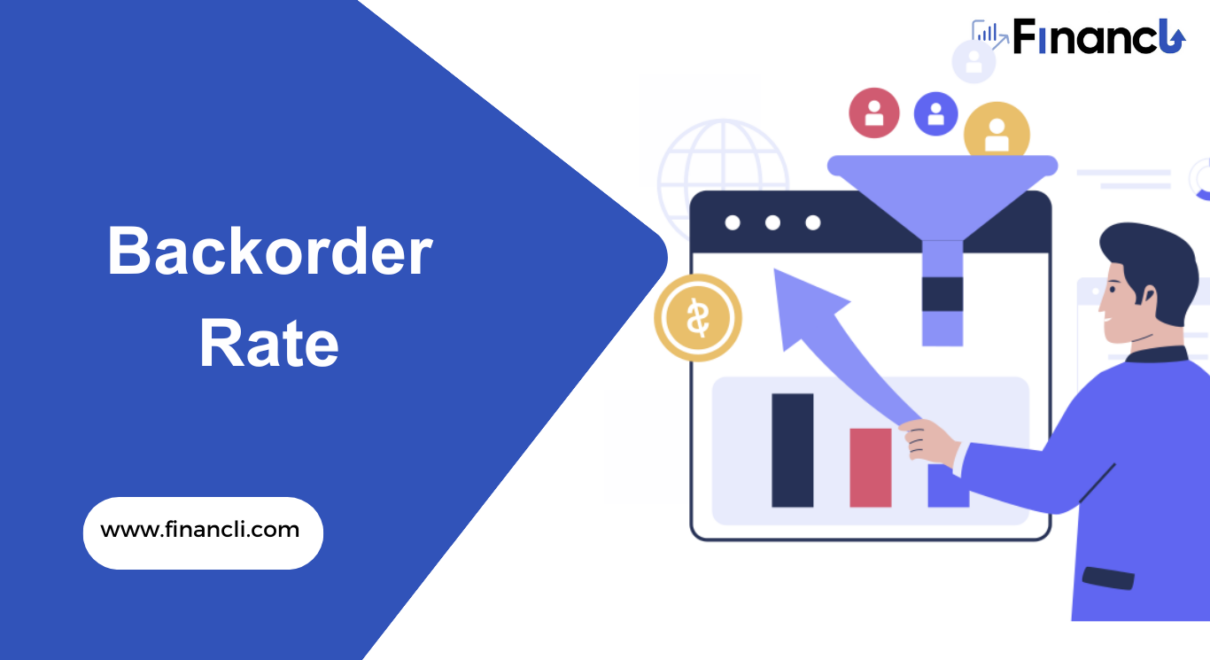Backorder Rate:
The Backorder Rate is a key performance indicator that quantifies the percentage of items in a company’s inventory that are temporarily unavailable due to insufficient stock to meet customer demand within a specified period. It is calculated by dividing the number of back-ordered items by the total demand and expressing the result as a percentage. This metric is instrumental in assessing the effectiveness of inventory management, supply chain stability, and the impact on customer satisfaction, providing valuable insights for strategic decision-making in business operations.
Formula Of Backorder Rate
To calculate the Backorder Rate, use the following formula:
Backorder Rate} = (Number of Backordered Items / Total Demand) x 100
Example
Suppose you have 20 back-ordered items out of a total demand of 200. The Backorder Rate would be ( 20/200) x 100 = 10%
Importance and Impact of Backorder Rate on Business
Effective management of the Backorder Rate significantly influences various aspects of business operations, contributing to overall success. Here’s an elaboration on its importance and impact:
Supply Chain Stability
Maintaining optimal inventory levels is paramount for supply chain stability. When businesses accurately gauge and manage the demand for their products, they can prevent disruptions in the flow of goods. This stability extends from the procurement of raw materials to the delivery of finished products, ensuring a seamless and efficient supply chain. A stable supply chain, in turn, enhances the reliability and reputation of the business in the eyes of customers and partners.
Customer Satisfaction
The Backorder Rate has a direct correlation with customer satisfaction. Timely delivery of products is a critical factor in meeting customer expectations and preventing dissatisfaction. When businesses effectively manage backorders, they ensure that customers receive their desired items within the expected timeframe. This reliability not only builds trust but also fosters positive customer experiences, encouraging repeat business and positive word-of-mouth referrals.
Cost Efficiency
Minimizing backorders is a strategic approach that positively impacts the financial health of a business. Excess backorders can lead to increased carrying costs, storage expenses, and the potential for inventory obsolescence. By optimizing inventory levels and fulfillment processes, businesses can reduce excess inventory costs, freeing up capital for other strategic investments. This, in turn, improves overall cost efficiency and cash flow, allowing the business to allocate resources more effectively and respond swiftly to market demands.
Strategies to Improve Backorder Rate

Effectively managing and reducing the Backorder Rate requires strategic approaches and proactive measures. Here’s an elaboration on key strategies to enhance this aspect of inventory management:
1. Enhance Demand Forecasting:
– Utilize real-time inventory tracking systems to gain accurate insights into customer demand.
– Analyze historical data, market trends, and customer behavior to refine demand forecasting models.
– Implementing advanced analytics tools can further improve the accuracy of future demand predictions.
2. Implement Inventory Management Software:
– Streamline inventory processes by integrating robust inventory management software.
– Leverage software features for centralized control, real-time updates, and data-driven decision-making.
– Automation of routine tasks enhances efficiency, reducing the likelihood of errors and delays.
3. Establish Safety Stock:
– Create a buffer of safety stock to mitigate the impact of unexpected surges in demand.
– Determine safety stock levels based on historical data, lead times, and market variability.
– Regularly reassess safety stock requirements to align with evolving market dynamics.
4. Optimize Order Fulfillment:
– Prioritize popular items and ensure their availability through efficient order fulfillment processes.
– Implement intelligent order routing to expedite the processing of high-demand products.
– Monitor inventory levels in real-time to identify and promptly address surges in demand.
5. Regularly Update Inventory Levels:
– Implement a systematic approach to update inventory levels based on sales and demand patterns regularly.
– Ensure accurate and timely stock notifications to customers, managing expectations transparently.
– Proactively communicate any potential delays and offer alternatives to minimize customer disappointments.
By incorporating these strategies, businesses can not only minimize backorders but also enhance overall efficiency in inventory management. These proactive measures contribute to improved customer satisfaction, optimized operational processes, and the ability to respond swiftly to changes in demand, ultimately fostering a more resilient and competitive business environment.
Frequently Asked Questions
- What is the industry benchmark for Backorder Rate?
– Industry benchmarks vary; aim to stay below 5% for optimal performance.
- What is the difference between a backorder and a sales order?
– A sales order is a request for a product, while a backorder occurs when the item is temporarily out of stock.
- What is the difference between backorder rate and backorder costs?
-The backorder rate measures the percentage of items out of stock, while back-ordered costs account for expenses related to managing and fulfilling those backorders.
Conclusion
Effectively managing backorder rates is crucial for a robust supply chain, customer satisfaction, and overall business success. By employing strategic approaches and leveraging modern inventory management techniques, businesses can navigate challenges and thrive in dynamic markets.






